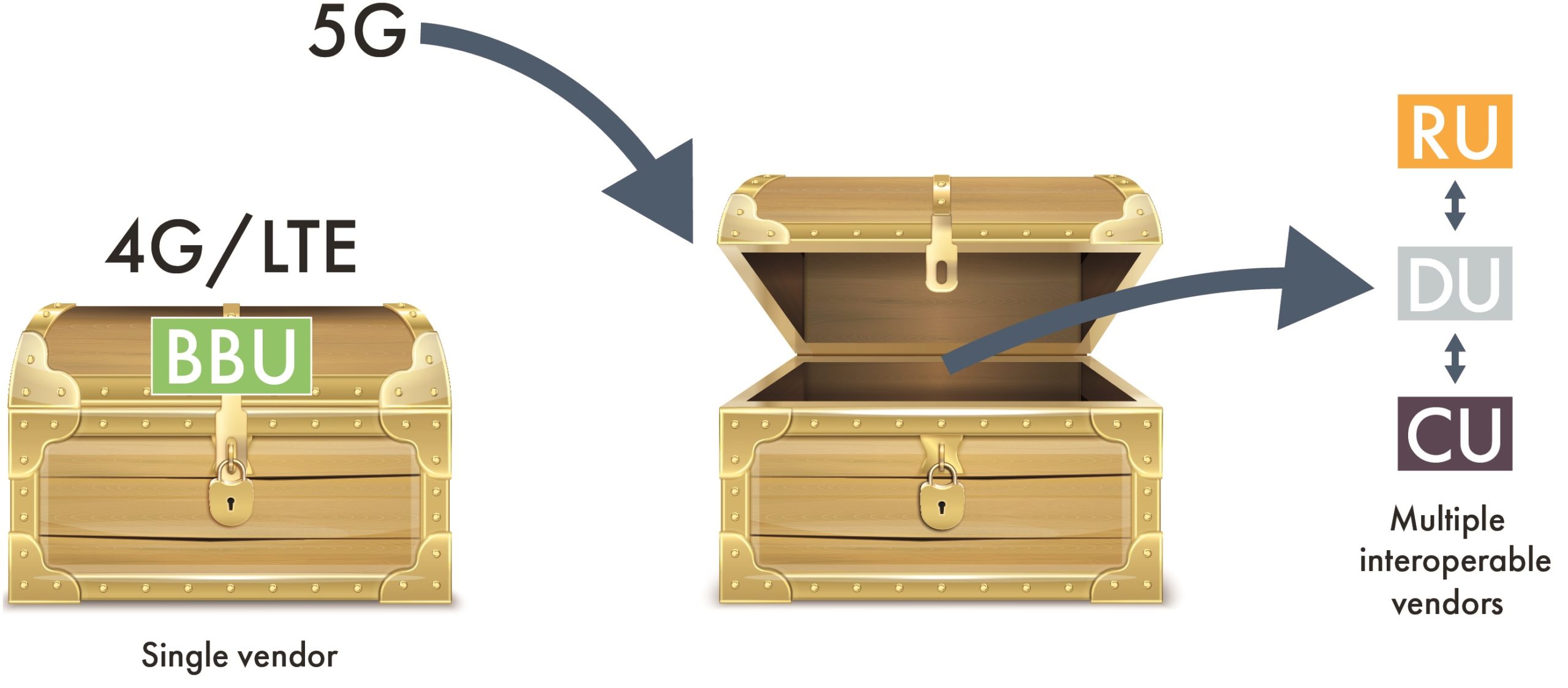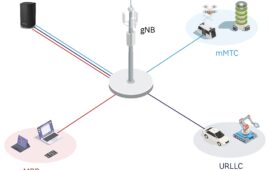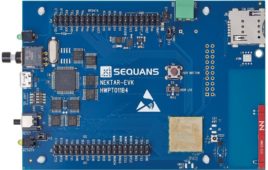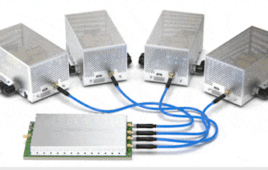Open radio access networks are moving ahead and will likely become the preferred connection between 5G radios and core networks.
Where would we be without standards and interoperable equipment? Take your home network. Adding a device is relatively easy. In many cases, you can just plug in a network cable. At worst, you enter your wireless network’s SSID and password. If your printer fails, you plug in a new one or associate your wireless network. You don’t have to replace anything else. Need to replace or add a network switch? No problem.
That’s not necessarily the case with larger communications networks. Despite a huge list of communications standards in use today, there’s still room for more interoperability. Network operators building 5G networks have cited a need to increase flexibility in the radio access network (RAN) to address 5G’s anticipated use cases. A new organization called Open RAN Policy Coalition looks to ensure that governments won’t hinder the movement towards open RANs. 5G Technology World spoke with Open Ran Policy executive director Diane Rinaldo and a coalition member about the coalition’s goals.
Launched on May 6, 2020, the Open RAN Policy Coalition currently consists of 47 companies that range from carriers to customer-equipment startups. The organization announced on June 12 the addition of 14 new members. It’s different from the O-RAN Alliance, which focuses on technical interoperability standards between the three major RAN components: Radio Unit (RU), distribution unit (DU), and centralized unit (CU).

With 5G, the proprietary baseband unit breaks open, resulting in separate radio units, distribution units, and centralized units, increasing network flexibility through interoperability.
The coalition focuses on advocating for open RAN and that governments don’t try to push a single-vendor baseband unit. The coalition doesn’t want a government to push for a national champion from whom all service providers must buy products. Furthermore, open network architectures will foster innovation and competition. Carriers should have the option to mix and match, buying the products that best fit their needs.
What will it take to get to an open RAN configuration given that carriers are deploying 5G networks now using proprietary BBUs? Won’t carriers hesitate to change network architectures given that they’ve spent billions deploying 5G networks? It will take a few years to reach the desired open RAN. Carriers will replace proprietary BBUs with separate components that will be mostly software, letting networks adapt as use cases evolve and as private 5G networks come online. At this time, we still don’t know if the open RAN concept will scale to satisfy the demand for 5G services, but if it can, then it should take on a life of its own.
The key will be in the technical standards for interfaces between units. That is, standardized fronthaul and mid-haul connections. Service providers want “plug-and play” interoperability between RUs, DUs, and CUs so they can pick and choose network components. “Think of it like a component stereo system versus an integrated system,” said Rinaldo. “If a component fails or needs an upgrade, you simply replace that component. The rest of the system stays in place.” Of course, such interoperability will need protocol testing and certification to work properly.
Who might oppose an open RAN? On first thought, you might think that the incumbent BBU suppliers, but that’s not the case. The coalition is working with Ericsson and Nokia on technical issues through the O-RAN Alliance to achieve open interfaces. Indeed, Ethernet seems to be emerging as the mid-haul interface between the DU and CU, with a combination of Ethernet and Enhanced Common Public Radio Interface (eCPRI) as the fronthaul interface between the RU and DU.
It appears that the only possible resistance to the open RAN might come from a government.





LightReading’s Mike Dano reports:
The US State Department is working to generate support for a new concept called “Integrated and Open Networks” (ION) that is basically a diluted version of open RAN. The agency’s goal is to attract big vendors like Nokia and Ericsson to the effort so that the US can provide an official, approved alternative to China’s Huawei on the international stage.
However, there doesn’t appear to be much momentum behind ION, based on my investigation into the topic.
Nonetheless, the issue yet again highlights US officials’ work to demonize Huawei as an international threat, as well as the Trump administration’s disjointed efforts to come up with some kind of approach to the issue.
https://www.lightreading.com/5g/heres-why-mike-pompeo-wants-a-watered-down-open-ran/a/d-id/761601